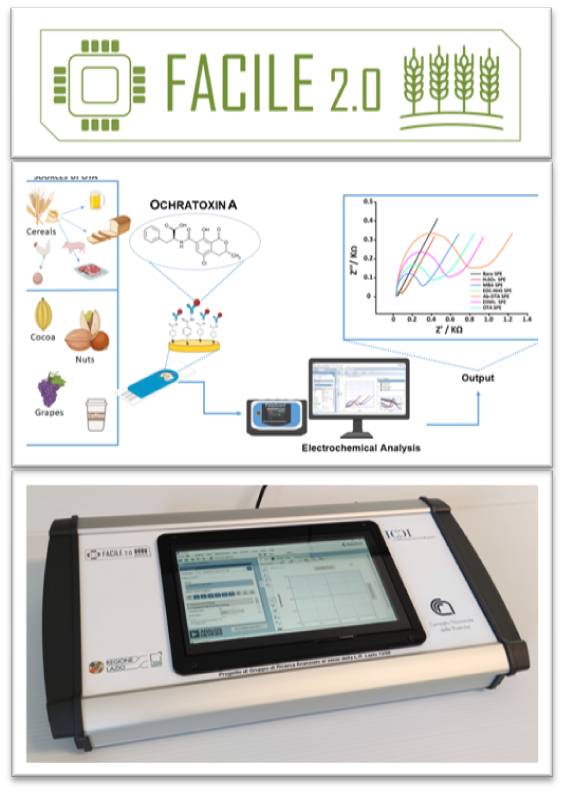Design and fabrication of biosensors for environmental and food safety monitoring

The activities deal with the quantitative analysis of biological processes and bio/molecular interactions useful for the development of bio/sensors for monitoring environmental pollutants and food quality and safety. Concomitantly, instrumentation suitable for reading the aforementioned biosensors is developed, too.
The availability of analytical, effective and rapid devices for monitoring environmental and agro-food contaminants is nowadays mandatory. The activities focused on the identification and characterization of reliable bioreceptors enabling the selective recognition of different classes of pesticides for construction of biosensors. In this context, deep structure/function/dynamics studies on the photosynthetic apparatus of genetically modified green algae were performed to select strains preserving activity and selectivity on solid state device. These bioreceptors have been integrated into different types of electrochemical transducers even functionalized with nanomaterials implementing their performance. These bioreceptors have also been used for the determination of the antioxidant capacity of astaxanthin, one of the most effective antioxidants available on the market. A label-free electrochemical immunosensor was also developed targeting the detection of ochratoxin A, a food-born mycotoxin with hepatotoxic, teratogenic, carcinogenic and immunosuppressive properties, with LOD in the nanomolar range. Furthermore, a portable and miniaturized multitransduction sensor prototype instrument was developed that implements the functions of a potentiostat-galvanostat with microfluidic measurements and management software that can also be used remotely. An electrochemical DNA-based sensor functionalized with alkyl thiolated silver nanoclusters is under construction for the selective detection of mercury in solution.
Cancelliere, R., Albano, D., Brugnoli, B., Buonasera, K., Leo, G., Margonelli, A., & Rea, G. (2021). Electrochemical and morphological layer-by-layer characterization of electrode interfaces during a label-free impedimetric immunosensor build-up: the case of ochratoxin A. Applied Surface Science, 567 150791.
Russo D., Lambreva M.D., Simionesco C.A., Sebban P., Rea G. (2019). Dynamics properties of photosynthetic microorganisms probed by incoherent neutron scattering. Biophysical Journal 116(9), 1759-1768.
Turemis M, Rodio G, Pezzotti G, Touloupakis E, Johanningmeier U, Bertalan I, Litescu SC, Rea G, Giardi MT (2017). A novel optical/electrochemical biosensor for real time measurement of physiological effect of astaxanthin on algal photoprotection. Sensors and actuators. B, Chemical, vol. 241, p. 993-1001.
Penu, R., Litescu, S. C., Eremia, S. A., Vasilescu, I., Radu, G. L., Giardi, M. T., Pezzotti G, Rea, G. (2015). Application of an optimized electrochemical sensor for monitoring astaxanthin antioxidant properties against lipoperoxidation. New Journal of Chemistry, 39, 6428-6436.


